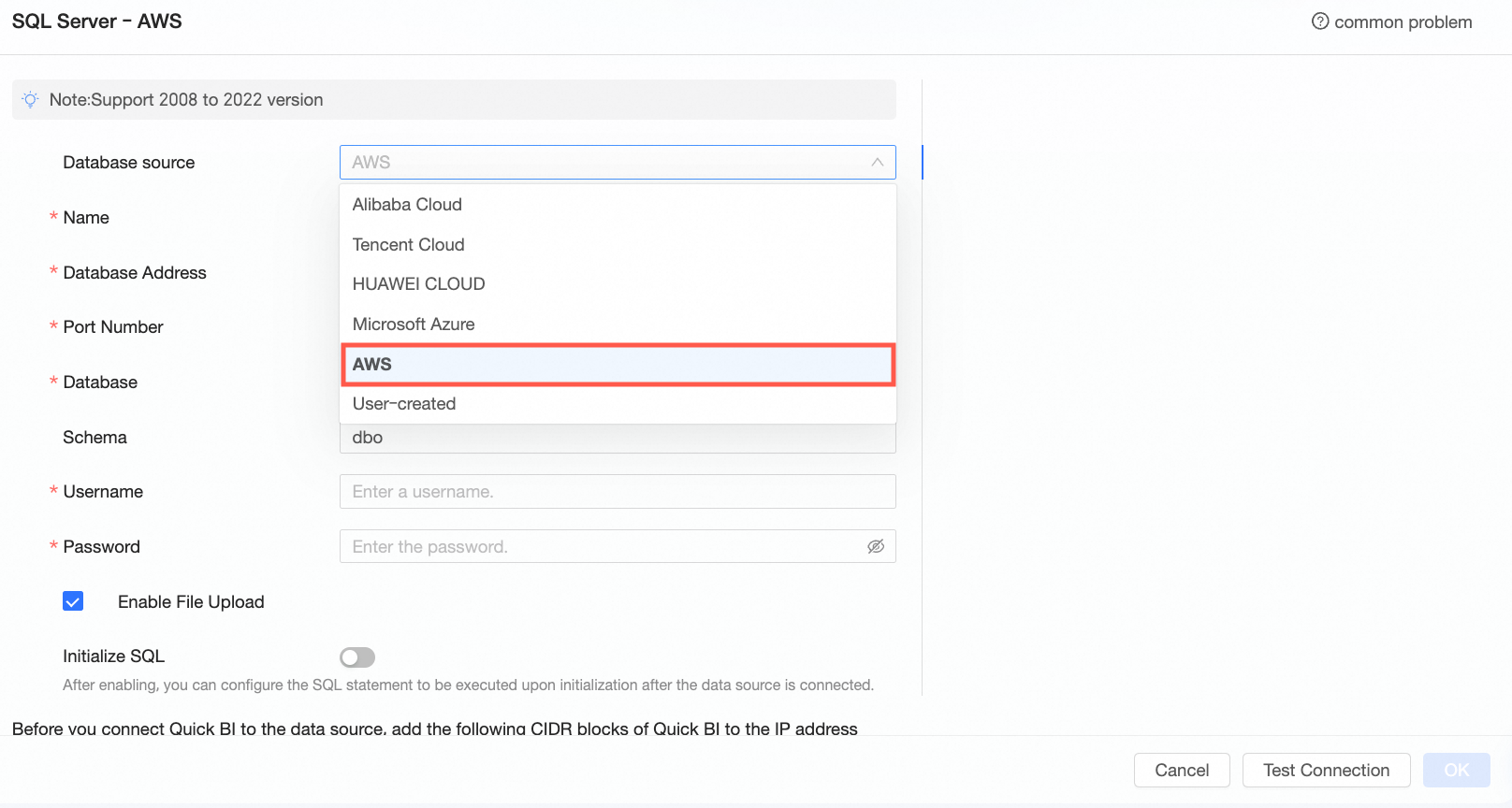This topic explains how to create an AWS data source for SQL Server.
Prerequisites
An AWS SQL Server database has been created.
You have obtained the username and password for the AWS SQL Server database.
Limits
Support is provided for versions from 2008 to 2022.
Procedure
Add Quick BI's IP address to the whitelist.
Before connecting to AWS SQL Server, add the IP address of Quick BI to the AWS SQL Server whitelist.
Verify the data source connection and create a data source.
Log on to the or the international Quick BI console.
Add a data source as shown in the following figure.
Access the data source creation interface via the data source creation entry.
Choose SQL Server as the data source.

Select AWS for the data source type.

In the Configuration Connection dialog box, configure the settings as needed for your business scenario.
Name
Description
Display Name
The display name in the datasource config list.
The name cannot contain special characters or start or end with spaces.
Database Address
The public address where the SQL Server database is deployed. Log on to the Amazon RDS console and obtain the public address in the instance details. Example: xxxxxxxxxxxxxxxxx.rds.amazonaws.com.
Port
Enter the correct port number. The default is 1433.
Database
The name of the database that you want to access.
Schema
The schema of the database that you want to access. The default is dbo.
Username
The corresponding username.
Password
The corresponding password of the database.
Enable file upload entry
After enabling, file upload is supported.
Initialize SQL
After enabling, you can configure the SQL statement to be executed after the data source connection is initialized.
Only SET statements are allowed for the SQL statement executed after each data source connection initialization. Separate statements with a semicolon.
Click Connection Test to verify the data source's connectivity.

Once the test is successful, click OK to finalize the data source addition.
What to Do next
Following the creation of a data source, you can proceed to create datasets and analyze data.
To add data tables from the SQL Server data source or custom SQL to Quick BI, refer to Create and Manage Datasets.
For adding visualization charts and data analysis, see Create a Dashboard and Visualization Chart Overview.
To explore in-depth data analysis, consult Drilling Settings and Display.